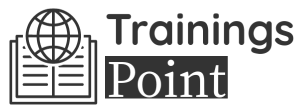The primary objectives for and deliverables of a Succession Planning program are to:
- Sustain the business through a deliberate and systematic effort to anticipate and ensure leadership continuity in key positions
- Retain and develop the organization's high potential [HiPos]
Encourage individual development by:
- Identifying career paths
- Conducting formal performance appraisals
- Providing daily coaching
- Creating Individualized Development Plans [IDPs]
WHY SHOULD YOU ATTEND?
Fortune 500 companies and small family businesses share a business need - ensuring they have the talent necessary to effectively lead their organizations in the future. One of the most significant contributions a leader can make is ensuring his/her business’ continuity and sustainability - by having employees who are willing and capable of filling each key position with a plan for doing so when the need arises Succession Planning is a:
- deliberate, systematic process of anticipating the need for talent and ensuring that the
- necessary employee competencies and experience are available when needed in the future
a strategic approach for avoiding an undersupply of talent, enhancing the organization’s current talent pool, and meeting its future needs
Not having a Succession Plan can be costly and sometimes disastrous; it is expensive to recruit, interview, select, on-board, and train a new leader and significant opportunity costs are incurred when a key job is not being performed.
AREA COVERED
I. Succession Plan Defined
- A deliberate, systematic process of anticipating the need for talent and ensuring that
- the necessary employee competencies and experience are available when needed
- A strategic approach for avoiding an undersupply of talent, enhancing the organization’s current talent pool, and meeting the organization’s future needs
II. Objectives and Benefits of Succession Planning
- Sustain the business through a systematic effort to ensure leadership continuity in key positions
- Attract, retain & develop high potentials [HiPos]
Encourage HiPos development by:
- Identifying career paths
- Conducting performance appraisals
- Providing daily coaching
- Creating Individualized Development Plans [IDPs]
- Holding Talent Review meetings
III. Tools and Processes Commonly Utilized for Developing and Implementing
- Self-appraisals and career goals
- Performance appraisals, 360 feedback, and ratings
- Assessment instruments
- GE grid
- Individual development plans [IDPs]
- HiPo talent development interventions
- Talent review meetings
IV. What an Organization, its Leaders, and the Program Participants Need to Do to Achieve an Effective Plan
What an organization needs to do:
- Supply funding/budget
- Establish a sharp vision and guidance for the program
- Develop a formal, written program
- Announce the objectives of the program to all employees
- Ensure that all leaders and managers support the program
What the leaders need to do:
- Have job descriptions developed for their teams
- Conduct effective, formal performance appraisals
- Identify employee developmental areas
- Share their knowledge and experience
- Involve employees in more of the leader's responsibilities
- Facilitate the completion of IDPs for all Hi Pos
What the program participants need to do:
- Conduct self-appraisals
- Identify their desired career paths
- Learn as much as they can about potential future assignments
- Perform to their capabilities
- Complete their IDPs
- Develop the employees reporting to them – so they have successors
V. Potential Measures of the Program’s Success
- Whether there is, at least, one successor for each key position
- Having developmental goals and IDPs established for each successor
- Determining how much of their manager’s job the successors can perform
- Determining whether successors can perform their manager’s jobs when they are unavailable and evaluating their performance during those times
LEARNING OBJECTIVES
- Understand what succession is
- Look at a succession plan from both a macro & micro level
- Learn the value & objectives of succession planning
- Discuss multiple tools & processes for developing a succession plan
- Identify the individual roles of the organization, its leaders & the program participants
- Be able to utilize several metrics to gauge the effectiveness of your plan
WHO WILL BENEFIT?
- HR Professionals New to the Field - seeking a comprehensive view of the subject with multiple application initiatives
- Experienced HR Professionals - seeking a refresher
- Leaders and Managers - interested in understanding how a Succession Plan benefits an organization
- SHRM Associations
- HR Groups on LinkedIn
- Any Professional Manager Groups/Associations
Fortune 500 companies and small family businesses share a business need - ensuring they have the talent necessary to effectively lead their organizations in the future. One of the most significant contributions a leader can make is ensuring his/her business’ continuity and sustainability - by having employees who are willing and capable of filling each key position with a plan for doing so when the need arises Succession Planning is a:
- deliberate, systematic process of anticipating the need for talent and ensuring that the
- necessary employee competencies and experience are available when needed in the future
a strategic approach for avoiding an undersupply of talent, enhancing the organization’s current talent pool, and meeting its future needs
Not having a Succession Plan can be costly and sometimes disastrous; it is expensive to recruit, interview, select, on-board, and train a new leader and significant opportunity costs are incurred when a key job is not being performed.
I. Succession Plan Defined
- A deliberate, systematic process of anticipating the need for talent and ensuring that
- the necessary employee competencies and experience are available when needed
- A strategic approach for avoiding an undersupply of talent, enhancing the organization’s current talent pool, and meeting the organization’s future needs
II. Objectives and Benefits of Succession Planning
- Sustain the business through a systematic effort to ensure leadership continuity in key positions
- Attract, retain & develop high potentials [HiPos]
Encourage HiPos development by:
- Identifying career paths
- Conducting performance appraisals
- Providing daily coaching
- Creating Individualized Development Plans [IDPs]
- Holding Talent Review meetings
III. Tools and Processes Commonly Utilized for Developing and Implementing
- Self-appraisals and career goals
- Performance appraisals, 360 feedback, and ratings
- Assessment instruments
- GE grid
- Individual development plans [IDPs]
- HiPo talent development interventions
- Talent review meetings
IV. What an Organization, its Leaders, and the Program Participants Need to Do to Achieve an Effective Plan
What an organization needs to do:
- Supply funding/budget
- Establish a sharp vision and guidance for the program
- Develop a formal, written program
- Announce the objectives of the program to all employees
- Ensure that all leaders and managers support the program
What the leaders need to do:
- Have job descriptions developed for their teams
- Conduct effective, formal performance appraisals
- Identify employee developmental areas
- Share their knowledge and experience
- Involve employees in more of the leader's responsibilities
- Facilitate the completion of IDPs for all Hi Pos
What the program participants need to do:
- Conduct self-appraisals
- Identify their desired career paths
- Learn as much as they can about potential future assignments
- Perform to their capabilities
- Complete their IDPs
- Develop the employees reporting to them – so they have successors
V. Potential Measures of the Program’s Success
- Whether there is, at least, one successor for each key position
- Having developmental goals and IDPs established for each successor
- Determining how much of their manager’s job the successors can perform
- Determining whether successors can perform their manager’s jobs when they are unavailable and evaluating their performance during those times
- Understand what succession is
- Look at a succession plan from both a macro & micro level
- Learn the value & objectives of succession planning
- Discuss multiple tools & processes for developing a succession plan
- Identify the individual roles of the organization, its leaders & the program participants
- Be able to utilize several metrics to gauge the effectiveness of your plan
- HR Professionals New to the Field - seeking a comprehensive view of the subject with multiple application initiatives
- Experienced HR Professionals - seeking a refresher
- Leaders and Managers - interested in understanding how a Succession Plan benefits an organization
- SHRM Associations
- HR Groups on LinkedIn
- Any Professional Manager Groups/Associations
Speaker Profile
 Pete Tosh
Pete Tosh
Pete Tosh is Founder of The Focus Group, a management consulting and training firm that assists organizations in sustaining profitable growth through four core disciplines:Maximizing Leadership EffectivenessImplementing Strategic HR InitiativesStrategic PlanningEnhancing Customer LoyaltyThe Focus Group has provided these consulting & training services to manufacturing & service organizations across the U.S., Canada, Europe & the Middle East.Pete has worked closely with the senior leadership teams of organizations such as Brink’s, EMC, State Farm Insurance, Marriott, N.C.I., Freddie Mac, and YKK Pete is also co-author of Leading Your Organization to the Next Level: The Core Disciplines of Sustained Profitable Growth. Pete holds …
Upcoming Webinars

California Meal and Rest Breaks: What You Dont Know Can Cos…

Responding to EEOC Discrimination Charges-What's Your Busin…

Implementing an Effective Human Error Reduction Program


Conflict Resolution - Prevent, De-escalate, Resolve

When Employees Travel: Wage and Expense Rules Employers Mus…

With Mandatory Paid Leave Gaining Ground Is It Time To Do A…

Female to Female Hostility @Workplace: All you Need to Know

Form 1099-MISC and 1099-NEC Compliance Update 2024

Validation Statistics for Non-Statisticians

The Totally Organized Professional Is All About Outcomes

Why EBITDA Doesn't Spell Cash Flow and What Does

GAMP5, Second Edition and Alignment with Computer Software …

Project Management for Non-Project Managers - Scheduling yo…

Sunshine Act Reporting - Clarification for Clinical Research

Understanding the Math of HR… So You Can Show How HR Impact…

FFIEC BSA/AML Examination Manual: What Compliance Officers …

How to Address ISO's New Climate Change Requirements

I-9 Audits: Strengthening Your Immigration Compliance Strat…


Re-imagine Finance & Accounting Made Simple. Three Webinars…

Stay Interviews: A Powerful and Low-Cost Employee Engagemen…


How To Conduct An Internal Harassment And Bullying Investig…


Effective Onboarding: How to Welcome, Engage, and Retain Ne…

Managing Toxic & Other Employees Who Have Attitude Issues


Analytical Method Validation Under Good Laboratory Practic…

Do's and Don'ts of Documenting Employee Behaviour, Performa…

Do's and Don'ts of Giving Effective Feedback for Performanc…

Onboarding New Hires: Leverage the Potential of Artificial …

Project Management for HR, Administrative Professionals, an…

Tattoos, hijabs, piercings, and pink hair: The challenges …

Using Behavior Based Interviewing for Finding the Best Matc…

How to Document Employee Discussions and Why it is Important

Stressed Out: How to Handle Conflict, Difficult People and …

Harassment, Bullying, Gossip, Confrontational and Disruptiv…

Best Practices for Working With Vendors and Suppliers

Understanding the Artificial Intelligence Landscape

Marketing to Medicare or Medicaid Beneficiaries - What You …

Accounting For Non Accountants : Debit, Credits And Financi…

Principles & Practices for the Cybersecurity of Legacy Medi…

Independent Contractor vs. Employee New Rule Issued by The …

Ultimate Persuasion Strategies! - Secret Influence Tools & …

Kicking your Employee Retention Efforts into Overdrive: Sta…
